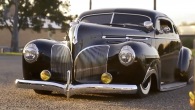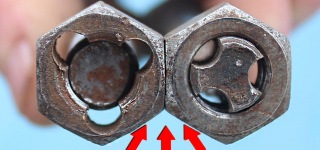Restoration Mini Jeep Willys with Engine 150cc
The process of renovating an old, rusty Jeep Willys 1960 motor car, shown in today's great video, is not only an intriguing journey into automotive restoration but also a testament to craftsmanship, dedication, and the love for vintage vehicles. Let's delve into the details.
The Jeep Willys, manufactured in the 1960s, holds significant historical value as it represents a pivotal era in automotive and military history. The video showcases the meticulous process of renovating the Jeep Willys from its dilapidated state to its former glory. The renovation involves various stages, including disassembly, assessment, repair, and reassembly.
One crucial aspect of the renovation process is preparing the vehicle's body for painting or spraying. This involves removing rust, dents, and imperfections, sanding the surface to create a smooth finish, and applying primer to ensure proper adhesion of the paint. The removal of the engine for repair indicates a thorough approach to restoring the vehicle's mechanical components. This step involves overhauling the engine, replacing worn-out parts, and ensuring optimal performance and reliability.
Cleaning the chassis is essential not only for aesthetic reasons but also for structural integrity. By removing dirt, grime, and rust from the chassis, the restorer ensures a solid foundation for the vehicle. Respraying the chassis with protective coatings helps prevent corrosion and enhances durability. The mention of a 150cc engine with 3 speeds and a reverse gear suggests modifications or adaptations made to the original vehicle. While purists may prefer to maintain the Jeep Willys in its original configuration, such modifications can enhance performance and usability, making the vehicle more practical for modern use.
The video offers a captivating glimpse into the intricate process of renovating a vintage Jeep Willys, highlighting the restorer's passion, skill, and attention to detail. By preserving and revitalizing a piece of automotive history, the restorer not only honors the legacy of the vehicle but also contributes to the rich tapestry of automotive culture. So you have a great opportunity to see this process as close as possible. Get into the details of the entire restoration process and gain experience if you are interested in this type of activity. Enjoy watching.
The Jeep Willys, manufactured in the 1960s, holds significant historical value as it represents a pivotal era in automotive and military history. The video showcases the meticulous process of renovating the Jeep Willys from its dilapidated state to its former glory. The renovation involves various stages, including disassembly, assessment, repair, and reassembly.
One crucial aspect of the renovation process is preparing the vehicle's body for painting or spraying. This involves removing rust, dents, and imperfections, sanding the surface to create a smooth finish, and applying primer to ensure proper adhesion of the paint. The removal of the engine for repair indicates a thorough approach to restoring the vehicle's mechanical components. This step involves overhauling the engine, replacing worn-out parts, and ensuring optimal performance and reliability.
Cleaning the chassis is essential not only for aesthetic reasons but also for structural integrity. By removing dirt, grime, and rust from the chassis, the restorer ensures a solid foundation for the vehicle. Respraying the chassis with protective coatings helps prevent corrosion and enhances durability. The mention of a 150cc engine with 3 speeds and a reverse gear suggests modifications or adaptations made to the original vehicle. While purists may prefer to maintain the Jeep Willys in its original configuration, such modifications can enhance performance and usability, making the vehicle more practical for modern use.
The video offers a captivating glimpse into the intricate process of renovating a vintage Jeep Willys, highlighting the restorer's passion, skill, and attention to detail. By preserving and revitalizing a piece of automotive history, the restorer not only honors the legacy of the vehicle but also contributes to the rich tapestry of automotive culture. So you have a great opportunity to see this process as close as possible. Get into the details of the entire restoration process and gain experience if you are interested in this type of activity. Enjoy watching.
MOST POPULAR
 1939 Plymouth Coupe 383 Street Rod
1939 Plymouth Coupe 383 Street Rod The Best Cabover Ever Built!
The Best Cabover Ever Built! 1928 Pierce-Arrow Model 81 7-Passenger Sedan
1928 Pierce-Arrow Model 81 7-Passenger Sedan The Rocketman Running the Famous "Beast Kart" at 60mph in the Desert
The Rocketman Running the Famous "Beast Kart" at 60mph in the Desert Mercury 1951 I TMC COBRA 51 by Tarso Marques Concept
Mercury 1951 I TMC COBRA 51 by Tarso Marques Concept 1940 Dodge Coupe
1940 Dodge Coupe 1964 BMW R69S Cold Start
1964 BMW R69S Cold Start 1956 Ariel Square Four
1956 Ariel Square Four The Scania 4-Serie Longline V8 Truck Modified by Transports Beau
The Scania 4-Serie Longline V8 Truck Modified by Transports Beau Starting a Panther M100 600cc Classic Motorcycle
Starting a Panther M100 600cc Classic Motorcycle
FACEBOOK COMMENTS
YOU MIGHT ALSO LIKE

Bizarre Trick: Unlock Your Car Using Tennis Ball

Bizarre Footage Demonstrates Fuel Altered Which Gone Terribly Wrong

Amazing Idea Homemade Invention You Need to See!

Tig Welding Stainless Steel - Walking the Cup vs TIG Finger

Making a Ball Bearing Motor Easily and Quickly

Ingeniously Designed and Brilliantly Built 9 Cylinder Radial Engine by Ageless Engines

The Very First Flight Of Velocopter VC200 From E-Volo

Monster-Like DIY Jet Car Throws Flames Out of Its Cool Exhaust Pipes

Time to Learn: What are Individual Throttle Bodies and What are Their Benefits?

Road Jetter High Pressure Cleaning Truck Can Destroy Thick Moss Just in Seconds

Australian V8 Chainsaw Powered by a Car Engine

How a Pretty Lady Gives Reaction After Seeing Top Fuel Dragsters For The First Time Ever!

Tire Mounting in Pure Redneck Style: Crazy but Totally Works!

Badass Homemade Turbocharger Shoots Fire Out

Richness or Lavishness? Dubai's Abandoned Cars Distress All Car Lovers!
